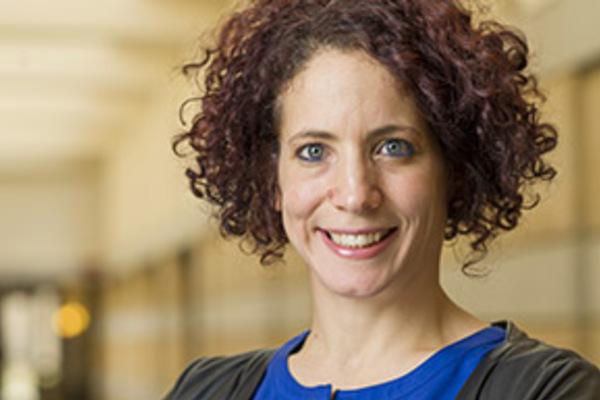
TA’ALA (Tolerant Attitudes and Leadership for Action) was a two year (2013-2015) CRS project, in partnership with the local Coptic Catholic Dioceses and three Muslim or interfaith organizations: Nour El Islam, Family House, and Sohag CDA. It was implemented in twenty villages in the three Upper Egyptian governorates of Assiut, Sohag, and Luxor. In a context where Christian-Muslim violence often erupts, manifesting occasionally in the destruction of Christian places of worship, TA’ALA was designed to enhance interreligious tolerance as a pathway to nonviolent inter-group conflict mediation. As in the case of Bosnia and Herzegovina’s obstacles for post-war reconciliation, escalating patterns of violence along religiocultural fault-lines in Upper Egypt can be explained in terms of societal separation, which contributes to stereotyping, discrimination, and other-ing. Roger Fahmy, who oversaw TA’ALA and wrote the CRS case study along with Malaka Refai, explains that Christian communities in Upper Egypt rely on the institutional infrastructures of the Church to structure all sociocultural aspects of their lives, not just those restricted to educational and worship functions. Conflict management, therefore, has been intra-group focused, with few resources for inter-group conflict transformation, including a lack of shared space for congregating. Inter-group conflict escalates quickly to violence precisely because of the lack of leadership willing to deescalate (in fact, some religious entrepreneurs occasionally have an interest in escalating violence) and the absence of sociocultural mechanisms for conflict transformation. Hence, TA’ALA focuses on programing opportunities for leaders and youth to cultivate relations with one another as pivotal for expanding interreligious tolerance in various societal sectors.
The theory of change informing TA’ALA emphasized Muslim and Christian leaders and their willingness to be agents of collaborative conflict resolution and promoters of tolerance, and stressed how such collaborative action could contribute to overall reduction of inter-group suspicion along religiocultural lines. As in the case of CRS’ work in Central Mindanao, the project hinged on leaders’ potential ability to deescalate and/or prevent violent outcomes in situations of inter-group conflict. Selection of participants for leadership training, therefore, was determined by an assessment of leaders’ relative respectability and perceived authority within their respective communities. Those selected took part in binding (self-transformational) and bonding (intra-group dialogue and reassessment) activities, enhancing their peacebuilding capacities. Youth also engaged in similar training and in inter-group cultural activities. A final assessment of project implementation, however, determined that too much time was devoted to training and that a more effective approach would have privileged action-centric programing.
According to Fahmy, the Muslim and Christian religious and clan leaders who participated in TA’ALA established mechanisms to monitor and resolve interreligious conflict. There were 38 self-reported and corroborated instances of successful intercommunal interventions in interreligious, domestic, and intrareligious conflicts. Likewise, to support the goal of promoting interreligious tolerance, religious and clan leaders created 41 statements on the importance of cultivating inter-group acceptance, which were then shared with their communities. Other outcomes included 26 youth community action initiatives, such as health awareness campaigns, mixed faith sports events, and exchange visits to religious sites. Relationship-building through inter-group retreats also proved pivotal as a unique opportunity to overcome a landscape of societal separation that prevents opportunities for cohabiting spaces. As a result of such relationship-building, villagers in Luxor and Sohag turned their homes into spaces for interactions with participants in TA’ALA. As occurred in Mindanao, TA’ALA projects and inter-group associations generated new forms of partnership for promoting development goals, such as a collaborative clean-up project in a local Luxor neighborhood. It also facilitated emergency interventions in the aftermath of violence. On the other hand, an assessment of TA’ALA determined that more attention needed to be directed to how mothers, in particular, contribute to belligerent attitudes toward other communities. This particular gender angle illumines the complex ways in which negative attitudes are transmitted inter-generationally and, once again, suggests important intersections with development objectives such as religious literacy, education, and women’s empowerment. Identifying mothers as agents of violence underscores the need to expand and de-center the conceptions of leadership and influence considered key for TA’ALA’s theory of change.
The case study of TA’ALA’s work in Upper Egypt demonstrates how tensions and violence between Muslim and Christian communities result from segregated spaces, misinformation and misperceptions reinforced through societal separation, and a lack of inter-communal mechanisms to resolve conflicts, both when they erupt and as they are fueled by various entrepreneurs (especially those more attuned to broader national discourses). The examination also shows that inter-group relationship building, compounded with intra-group and personal transformative work that challenges misperceptions and the demonizing of the “other,” can have significant effects on quality of life by establishing mechanisms for collaboration and for deescalating disputes. The focus on youth and influential religious and clan leaders once again points to the instrumental value of key religious actors, but also suggests that tangible results of interreligious dialogue can only be measured in terms of either preventative action or other collaborative campaigns and projects designed to advance expansive development “secular” goals, such as health and education. An analysis of “religion” in this context, as in the other CRS projects on interreligious action covered in the CM Blog, underscores once more that religion intersects strongly with other identities. Hence, beyond conducting exclusively “religious” interventions, overcoming rigid and belligerent boundaries and promoting reconciliation or de-escalation of violence requires attending to the transmission mechanisms of belligerence, stereotyping, and negative rhetoric. This also involves identifying key actors that, often with some cultivation of skills and self-transformative work, could influence intra-communal bonding in order to facilitate inter-communal bridging activities—all potentially contributing to increased social cohesion and democratic praxis. Critically, the focus on interreligious action identifies important figures but the latter’s effective instrumentality becomes the outcome of cultivating “secular” skills and competencies through enhanced cross-sectoral collaboration.
Photo by Nikki Gamer/CRS. Religious leaders Father Rueiss, left, and Sheikh Moustafa who met in TA’ALA program and continue to engage in interreligious action in the village of Al Odayssat, Luxor in Upper Egypt.

